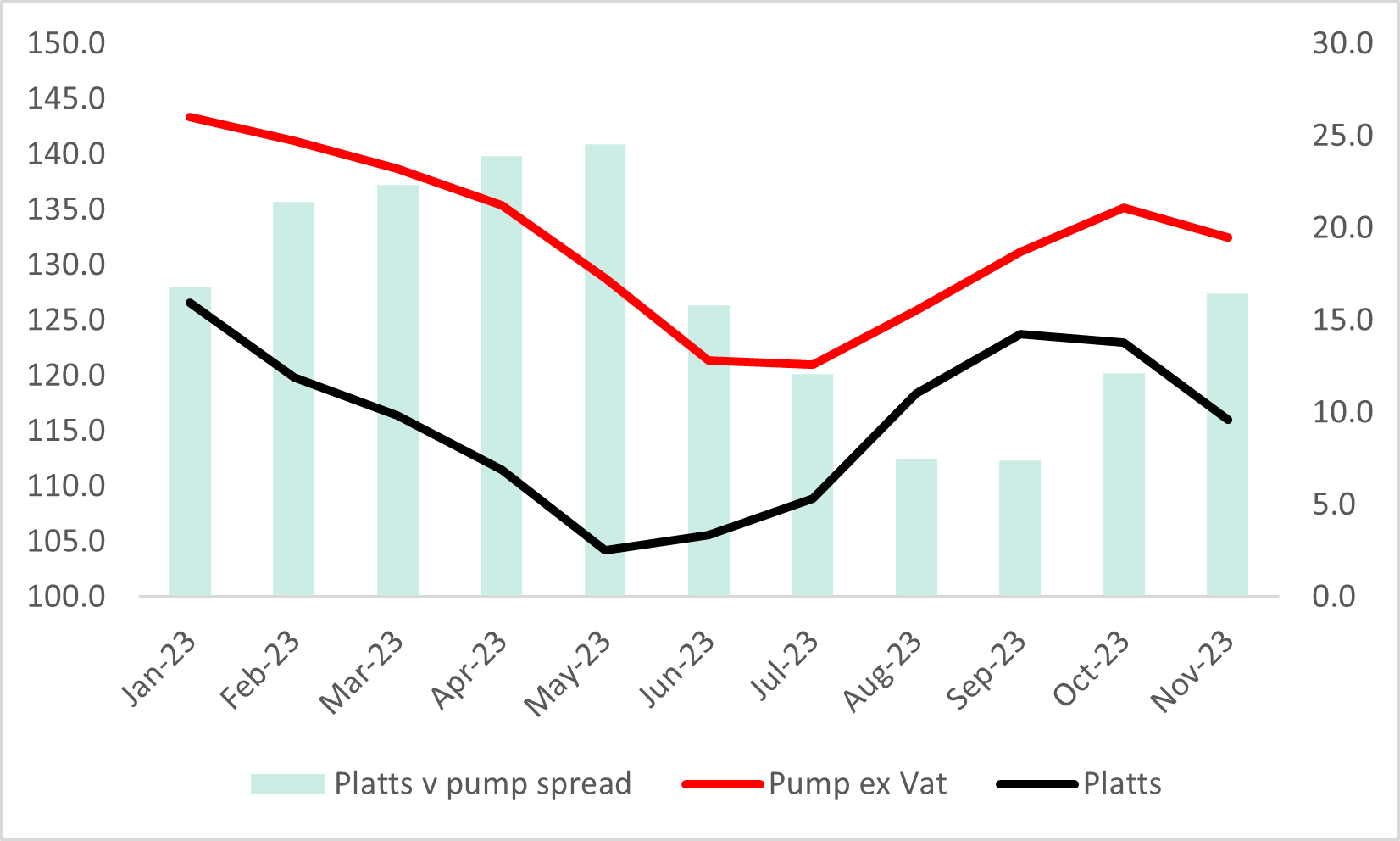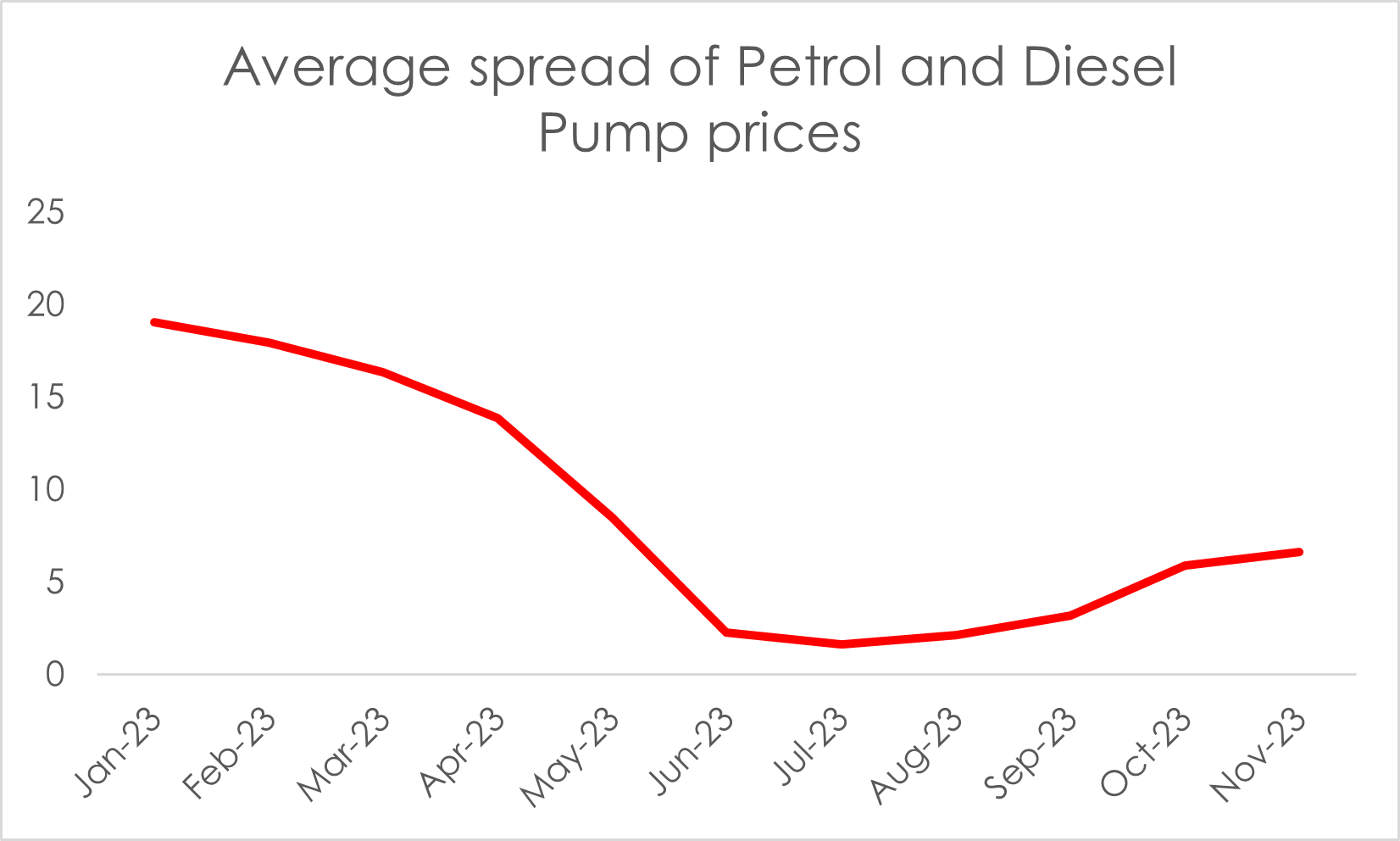November is well known for fireworks, and we saw a few of those in the oil market, particularly towards the end of the month when OPEC met to talk about production levels.
The OPEC meeting held in Vienna at the end of the month “reaffirmed the continued commitment … to ensure a stable and balanced oil market.” In practical terms, this meant reviewing the level of oil production for the new year resulting in an agreement to further production cuts of 2.2 million barrels a day.
What does a cut in oil production mean for UK fuel prices?
Under the most basic laws of supply and demand, a supply cut generally means an increase in cost as the product becomes harder to obtain. However, there are a few other factors to consider as we go into 2024.
- Demand – despite a push for global decarbonisation, oil consumption is expected to rise across 2024. The proposed cuts in production are meant to ensure that they stay in line with demand, rather than exceed it, hence the recent falls in price. However, the EIA expects demand to outstrip OPEC’s cuts leading to further price hikes.
- Currency exchange – 2023 has seen the pound fall to 1.18 against the dollar in March up to a peak to 1.31 in August. As oil is bought in dollars, a stronger pound can make the commodity cheaper.
- Retailer margins – Oil may be a key cost impacting the UK pump, but retailers will also have some control over how much additional margin they add to their costs. The CMA have found that supermarket fuel margins in 2023 have been higher that previous years on a percentage basis although the pence per litre margin is slightly down due to lower wholesale costs.
What will oil prices do in 2024?
As always, it depends on who you ask and what could happen. Investment bank, Goldman Sachs, is playing safe with it’s predictions by providing a range of $70-$100 per barrel. The wide range reflects the multiple factors impacting fuel prices which causes massive volatility of the commodity.
Both the EIA and Standard Chartered MENA Economist Carla Slim are predicting prices to reach the top of that range due to suspected tightening of oil supply.
The worst case scenario so far comes from the World Bank who speculate that if the current conflict in Gaza escalates, oil supplies could be disrupted sending oil up to $100-$150 per barrel.
What will happen to UK fuel prices in 2024?
As long as conflict remains contained and there are no further global shocks, we may see a quieter year at the pumps. However, If oil does breach the $100 mark, the likelihood is that diesel will once again skirt £2 per litre.
A key difference next year is that retailers will be under much more pressure, following the intervention by the CMA, to squeeze margins and keep the figure lower. Whilst there has been a small drop recently in pump prices recently, the spread between the wholesale (Platts) cost and the pump price has been growing.
As such, we would hope for a sustained drop over the next week or two to match the wholesale price.

However, recent prices suggest that retailers are dropping their margins on petrol much quicker than the diesel prices.
In June there was a sharp drop in the spread between petrol and diesel prices, but this has started to creep back up suggesting that retailers are perhaps keeping petrol prices lower by increasing margins on diesel – not great for most businesses who will be reliant on diesel for their commercial vehicles.

The good news for fixed price fuel card holders is that they will likely be seeing a larger saving against local prices. Find out if you could save money on your business fuel usage today.



